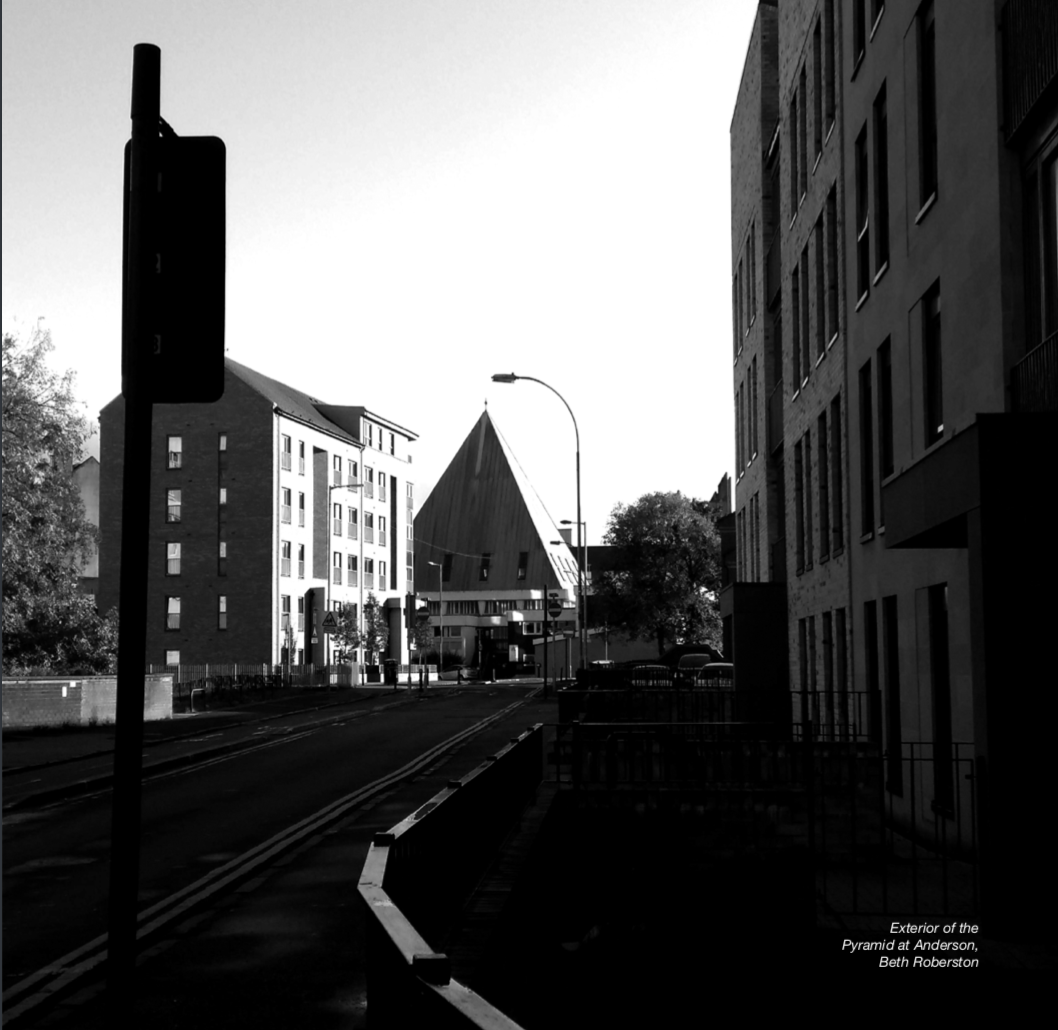Posthumanist concepts are challenging traditional Western representations and are crucial in the expansion of geographic thought. Influenced by Karen Barad and Donna Haraway, a diffractive methodology was used to practically apply posthumanist frameworks. In order to push beyond disciplines, beyond the human and beyond the literal, an artistic approach was adopted. Therefore, the research undertook 5 different variations of a creative experiment. Inspired by Elizabeth Grosz’s writings on art and territory, a sonic space was formed within The Pyramid at Anderston through the creation of a socio-material assemblage. Interlocutors were brought in to explore and interact with the sonic space and empirical data was drawn from discussions about their experiences. Along with the researchers experiences, the discussions provided insight into the agency of inhuman things and the conceptualisation of embodied hauntologies.
Selected as the Glasgow entry for the History and Philosophy of Geography Research Group dissertation prize.
still from variation 3

extract from variation 2
‘Hauntings are not immaterial. They are an ineliminable feature of existing material conditions’ (Barad, 2017 p107).
Hauntology, conceived by Jacques Derrida in 1993, is a portmanteau of haunt and ontology. Where ontology is the study of being, hauntology is the study of not being; a situated presence that neither exists or does not exist. Perhaps the lingering remnants of something that once existed or the pre-emptive anticipation of what’s to come…
…I suggest that the necessity of the living to hold the past within ourselves is an embodiment of hauntology. We keep the past with us and in doing so we live and relive, the future foreshadowed by the memories of our past. Through the creation of sonic space I will explore embodied hauntologies. Reverb has the ability to simultaneously obscure and expose as through its incoherence is a vast scope for interpretation. How will the interlocutors learn from and adapt to the sonic space and through sensation what insights can be gained from inhuman musicalities and socio-material assemblages.
“the time is out of joint” (Derrida, 1994 cited by Fisher, 2012)
By hearing voices and feeling human presence were we perhaps also haunted by our own anthropocentrism? Or perhaps it was our very understanding and dismissive ways of reflecting on these events that inform us of our inherently dualist mind-frames and the void we’ve created between ‘objective science’ and the natural chaos that dislocates and disenchants (Latour, 1993). The technoscientific however was not excluded from the socio-material assemblage… but neither was the undefined, the non- representational and the ghosts.

The interlocutors discussed the tangible/palpable nature of the sound. It had ‘presence’ that could be felt throughout the body. The pyramid framed the sound allowing it to become tangible as it interacted with the walls, objects and bodies. In this sense the building provided agency to the sound that the interlocutors could then interact with. The interlocutors often felt that the sound was influencing their movements. In contrast, none of the interlocutors said that they felt like their presence was influencing or manipulating the sound at all. They suggested that the sound would be happening in the same way whether they were there or not. Therefore the experiment was not in fact utilising sound to intensify the human relationship with the building but rather the human bodies acted as fleshy vessels of interpretation and sensation vibrating throughout the synergy between music and architecture.




